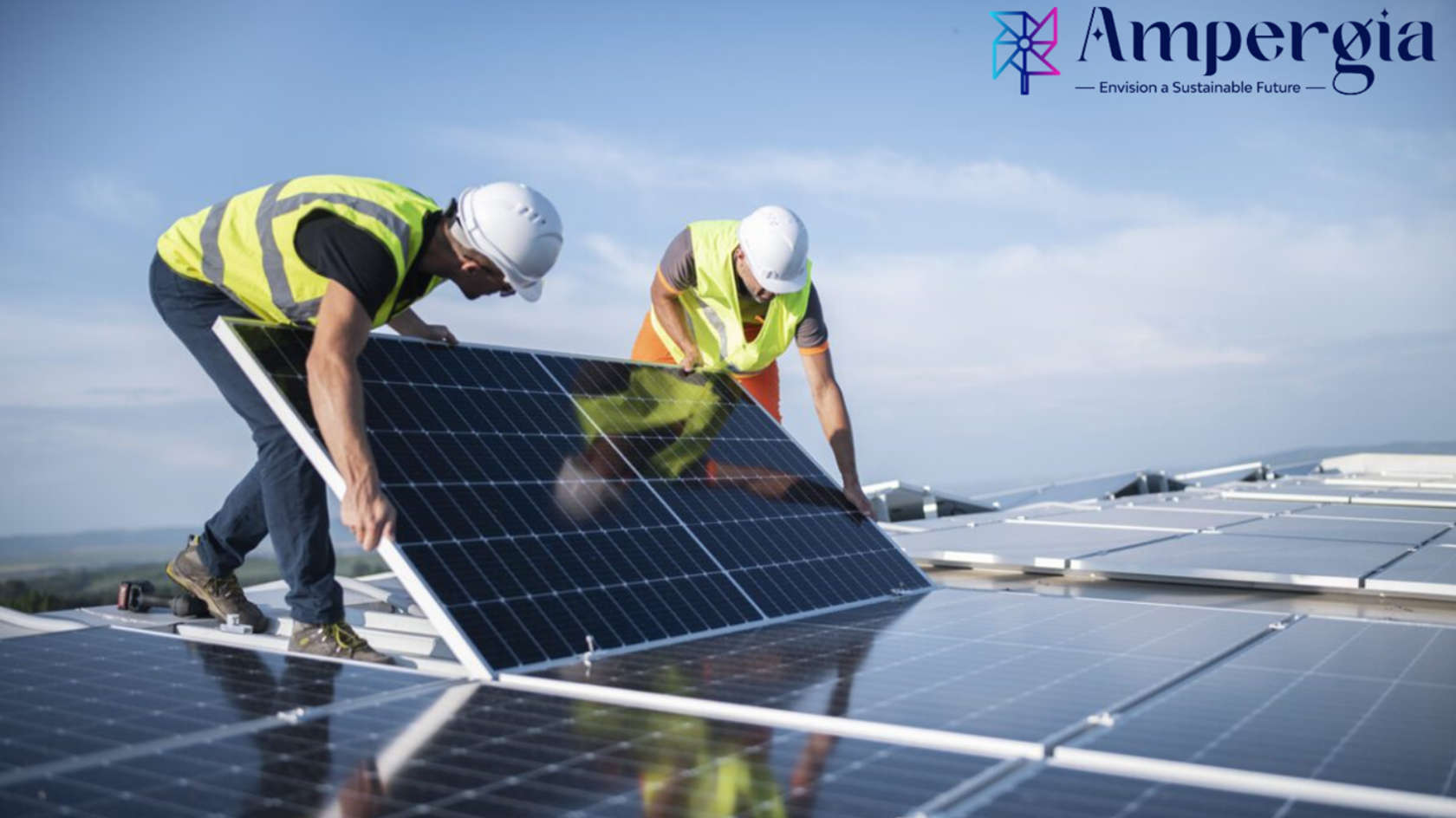
At Ampergia Limited, they believe the future of energy is not just about sustainability—it’s about harnessing the unlimited potential of the natural world.
And when we look at the horizon, there’s one source of energy that stands out as the shining star: solar power.
Did you know that by 2035, solar energy could provide up to 40% of global electricity? That’s right—nearly half of the world’s power coming from the sun! It may sound like a lofty ambition, but thanks to rapid advancements in technology, global policy shifts, and falling costs, this dream is becoming a reality faster than we imagined.
Let’s explore how solar power is poised to transform the global energy landscape in the next decade—and why the future is so bright (literally).
The Solar Boom: Why Solar Is Ready to Dominate
The numbers are staggering. Solar energy is currently the fastest-growing energy source in the world. According to the International Renewable Energy Agency (IRENA), more solar capacity is being added to the grid each year than any other form of energy. As technology advances and the global push for cleaner, greener energy intensifies, solar power is on track to meet 40% of the world’s electricity needs by 2035.
So, why is solar energy growing at such an exponential rate?
1. Falling Costs: Solar Is More Affordable Than Ever
Over the last decade, the price of solar technology has plummeted by more than 80%. This dramatic cost drop is one of the key factors driving the rapid adoption of solar power. What once seemed like an expensive, niche solution has now become a cost-competitive alternative to traditional energy sources like coal and natural gas. In many parts of the world, solar is now the cheapest form of new electricity generation. Whether it’s large-scale solar farms or residential rooftop installations, solar energy is becoming increasingly affordable and accessible.
2. Technological Advancements: Smarter, More Efficient Panels
At Ampergia Limited, we understand that innovation is the engine driving solar's incredible growth. Today’s solar panels are more efficient, durable, and affordable than ever before. Modern panels are capable of converting more sunlight into electricity, even in less-than-ideal conditions. With the development of bifacial panels that capture sunlight on both sides and perovskite solar cells that promise higher efficiencies at lower costs, the future of solar technology is looking brighter (pun intended!).
3. Global Investment: Governments and Corporations Are All In
Governments around the world are setting ambitious targets to reduce carbon emissions and transition to renewable energy. The U.S., China, Europe, India, and other key players have made significant strides toward increasing solar adoption. With tax incentives, renewable energy mandates, and massive investments in clean energy infrastructure, the global push for solar power is accelerating at a rapid pace.
At Ampergia, we’re excited to see how these policy changes are helping to make solar more accessible for businesses and homeowners alike. With forward-thinking regulations and the continued global shift towards net-zero emissions, solar is well-positioned to become a cornerstone of our energy mix.
The Solar Advantage: How 40% Is Achievable by 2035
If you’re wondering how solar could provide 40% of global energy in just over a decade, it’s all about scaling up and optimizing the systems we already have in place. Here’s a closer look at how this could happen:
1. Mega Solar Farms: The Power of Scale
As the demand for solar energy grows, so too does the size of solar farms. Take a look at the Bhadla Solar Park in India—at over 78 square kilometers (roughly the size of New York City), it’s the largest solar farm in the world. With solar farms growing exponentially in size and efficiency, large-scale solar projects are helping to meet the growing global demand for clean energy. These farms are not just massive—they’re highly efficient, thanks to technological innovations in solar tracking and energy storage.
2. Decentralised Solar Power: Empowering Local Communities
While large-scale solar farms are essential, decentralised solar power is just as important in meeting future energy needs. Rooftop solar installations, solar mini-grids, and off-grid systems are allowing homes, businesses, and communities to generate their own power. This trend is especially impactful in regions with limited access to electricity, where solar energy can provide affordable, reliable power. Countries like Kenya, India, and Brazil are already making significant strides in using solar to electrify rural areas, and this movement is only expected to grow.
3. Energy Storage: Solar Power 24/7
One of the key challenges with solar power has always been its intermittency—the fact that it only generates electricity when the sun is shining. But with advancements in solar battery storage and other energy storage technologies, solar power is no longer limited to daylight hours. Solar energy storage systems, such as Tesla’s Powerwall or large-scale grid storage, allow solar energy to be stored during the day and used during the night or cloudy periods. This means that solar can now be a reliable, round-the-clock energy source.
What Happens When Solar Powers 40% of the World?
So, what does a world powered by 40% solar energy look like? Here’s a glimpse into the future:
- A Cleaner Planet: Solar power is a key driver in the fight against climate change. By reducing our reliance on fossil fuels, solar energy could dramatically cut greenhouse gas emissions, helping to meet global climate goals and reduce the effects of global warming.
- Energy Independence: More solar means more nations can generate their own power, reducing reliance on imported fossil fuels. This leads to greater energy security, lower energy costs, and less exposure to the volatility of global energy markets.
- Job Creation and Economic Growth: The solar industry is already one of the fastest-growing job sectors in the world. As solar capacity increases, millions of new jobs will be created in manufacturing, installation, and energy storage. This will help stimulate economies, especially in emerging markets that are investing in solar infrastructure.
- Affordable Power for All: As the cost of solar energy continues to fall, electricity will become more affordable. Solar power’s low operational costs, coupled with declining installation prices, will make it a mainstream energy source for homes, businesses, and industries worldwide.
- A Smarter, Greener Grid: The transition to solar will require building smarter grids that can handle more renewable energy and balance demand. This will make the grid more resilient, efficient, and capable of handling the complex needs of a clean energy future.
The Road Ahead: Ampergia’s Vision for Solar Power
At Ampergia Limited, we’re thrilled about the future of solar energy. We’re working hard to contribute to this transformation by developing cutting-edge energy solutions that bring solar power to more people, businesses, and communities. With the solar revolution in full swing, we’re proud to be part of an industry that is shaping a cleaner, more sustainable world for future generations.
The world’s future is bright—and it’s powered by solar energy.
Are you ready to be part of the solar revolution? At Ampergia Limited, we’re here to help you make the switch to solar. Let’s create a sustainable energy future, together.














